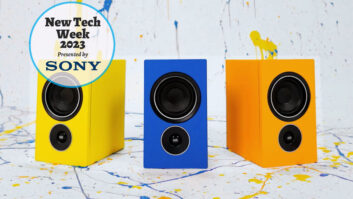How To Artfully Blend Your Room’s Form And Function Together

A professional theater designer will work out the details in every application, from millwork, to equipment mounting, to fabric attachment, lighting, and more..
Much has been said about the “home theater experience,” and many profess the ability to deliver it. A manufacturer will claim that their product is the answer, while an engineer will point to his ability to provide performance, and a designer will emphasize the importance of the décor. Though systems and engineering are key components and cannot be dismissed, these are the functional aspects of the “form must always follow function” rule, and without good form we cannot have a great home theater experience.
WHAT MAKES A GREAT-LOOKING THEATER?
If beauty is in the eye of the beholder, then designing a beautiful home theater is truly a subjective goal. That is why we must discover and reveal the objective of our client’s imagination by asking “engaging” questions and then listening closely to their answers.
The successful home theater designer will not compromise the performance of the room to achieve better aesthetics. This is where creativity and imagination may be challenged. For example, in a typical room, a wall might be adorned with art. In the theater application, however, the wall may require specific acoustical treatment and non-light reflective surfaces. Aesthetically, it would be unacceptable to leave the space blank, but the art often detracts from the performance. A creative theater designer can truly excel in such situations by modifying the art or creating an architectural acoustic detail that adds interest and performs the function.
UNDERSTANDING THE INTERIOR DESIGN
The interior design process involves several steps, including concept creation, review, revision, development, and documentation. Concept creation starts with the discovery process. We find the theater interior has taken some form even during functional design if we have done a good job gleaning information from our client. Once the functional design is developed, then we draw the decorative shell that is what will be seen.
Presentation of the concept allows the client to review the designer’s ideas and provide feedback. The designer must empower the client’s feedback and be open to suggestions. It is better to modify ideas on paper or the computer rather than in wood and plaster.
The designer should provide a summary of the suggestions for verification, followed by a revised concept and, upon approval, a written acceptance of the concept.

Sam Cavitt (samcavitt@medesign. tv) is president of Paradise Theater, a division of Media Environment Design Inc., located in Kihei, Hawaii, and Carlsbad, California.
THE REAL WORK BEGINS
Although it may seem like the design is done, the work has just begun. It is at this point that the development of the design is undertaken.
The professional theater designer will work out the details in every application, from millwork, to equipment mounting, to fabric attachment, lighting, and more. There are many areas which could be problems unless the designer knows how it is all going to work together. The designer will lean on many subcontractors and suppliers for information, but manufacturer information needs to be integrated into the specific design to ensure successful implementation.
The key is make sure that you are charging enough to do a good job. Historically, some designers have put it in the hands of the suppliers to work out the details. The hard truth is that mistakes will reflect on the designer whether you were paid for it or not. We have found it prudent to provide an interior plan, a reflected ceiling plan, all wall elevations, and sections and details for all interior construction and applications.
Frank Lloyd Wright said, “Give me the luxuries of life, and I will willingly do without the necessities.” I think that’s a great analogy for expressing the experience of designing a private theater so perfectly that your clients are drawn there and reluctant to leave it. If you listen, your client will tell you what they want. The rest is up to you.







